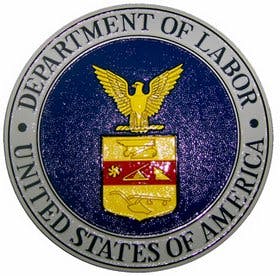Employees in New York and California are being cheated out of millions in wages by their employers, a new study reveals, and the U.S. Department of Labor wants to find more employers who are skirting the law.
The wage study was conducted by the Eastern Research Group and commissioned by the Labor Department to measure the possible socio-economic impacts of minimum wage violations in California and New York. These two states were selected for the study because of their large workforce.
A fair day’s pay?
The study found that 3.5 percent to 6.5 percent — 300,000 workers earning wages or salaries — are paid less than the minimum wage in those states. Assuming that other states have similar wage violations, that can add up to more than 2 million workers nationwide being ripped off, according to U.S. Secretary of Labor Thomas Perez.
“Imagine if 40 cents out of every dollar you earned didn’t show up in your paycheck but in your employer’s pocket,” said Perez on the Labor Department website. “For every hour of tough, on-your-feet work looking after children, cleaning homes, making hotel beds, preparing food in a restaurant or picking crops in a field, it’s possible you could be working 24 minutes for free. That’s just wrong.”
Some employees complained of employers habitually shorting them on their hours or failing to pay overtime. Other wage violations occurred when employers misclassified workers as independent contractors instead of employees, who are covered under the Fair Labor Standards Act.
The study found that younger workers are more likely to be underpaid, and that wage violations occurred most often in the service industries. Other industries included hospitality and leisure, health and educational services, wholesale and retail businesses, and other services.
Financial and social impact
The study also sought to measure the financial and social impact of wage violations, and found that:
- The two states in question spent $23 million more for school meal programs and $44 million more in food stamps because of lost wages.
- Wage violations also impacted payroll tax collections. In California, the minimum wage violations meant an estimated $167 million less in payroll taxes, and $71 million in New York.
- In one year, California lost $14 million and New York $8 million in income tax revenues.
- Workers also lost millions in benefits they would have been entitled to through the earned income tax credit (EITC) program.
Stepped-up enforcement
The Labor Department is making this issue a priority, and the Obama administration hopes to hire more investigators. The department has zeroed in on industries where workers are most often cheated out of their pay, whether inadvertently or intentionally, as well as industries in which workers least likely to complain.
The department’s enforcement strategy is threefold:
- Using enforcement tools to penalize non-compliance.
- Identifying the supply chain of contractors to cause a ripple effect. Parties at the top of the supply chain will examine the compliance of their subcontractors, challenging them to consider the risk of using subs or suppliers who don’t follow the law.
- Publicizing the findings of wage and hour violations in order to influence others.
Department makes an example of contractor
In one publicized case in Arizona, a drywall contractor landed in hot water for misclassifying his employees as independent contractors. He failed to pay proper overtime to employees and failed to keep complete and accurate payroll record keeping. As a result, the company was required to pay $556,000 in back pay for overtime, liquidated damages to 445 employees, and $44,000 in civil penalties.
In addition, the company had to agree to ongoing oversight and to help spread awareness.
The company hired a third-party monitor to ensure compliance and provide FLSA training to employees and supervisors. They must make sure all subcontractors are licensed, insured, and compliant with the FLSA.
Finally, the company must present information to local home builder associations on the need for proper classification and pay, and highlighting the cost of unlawful misclassification. In this way, the Labor Department hopes to influence other contractors to comply with the law.
